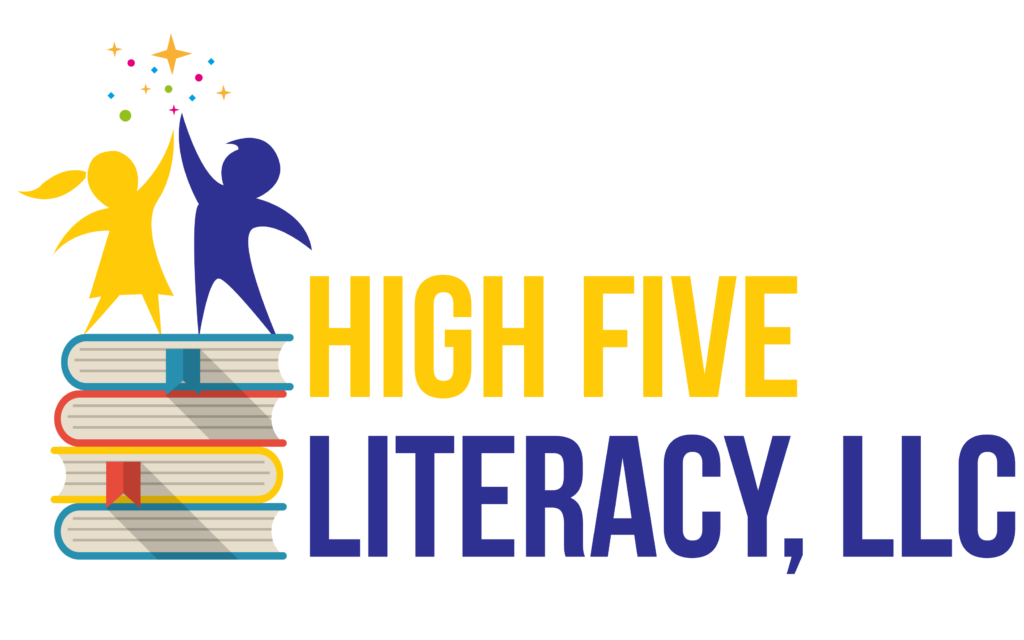“Why are we teaching phonics in fourth grade and asking first graders to do ‘deep reading’ of words they haven’t been taught to read?”
 This rhetorical question was posed by Lavinia Mancuso, the Executive Director of Everyone Reading in New York City, in an email in which the subject line said “Topsy Turvy.” Some “experts” in the literacy field contribute to the “topsy turvy” confusion because they seem to want to promote evidence-based instruction yet continue to endorse programs that go against what works.
This rhetorical question was posed by Lavinia Mancuso, the Executive Director of Everyone Reading in New York City, in an email in which the subject line said “Topsy Turvy.” Some “experts” in the literacy field contribute to the “topsy turvy” confusion because they seem to want to promote evidence-based instruction yet continue to endorse programs that go against what works.
In my last blog, “Intervention: Can We Trust Evidence for ESSA,”I critiqued the Evidence for ESSA website, a free web-based resource that purports to provide easy access to information on instructional programs meeting the evidence standards defined in the Every Student Succeeds Act (ESSA). I pointed out that the ESSA website can be misleading and how school district purchases can be influenced by its faulty reviews. To that end, Robert Slavin, Director of the Center for Research and Reform in Education at Johns Hopkins University, which launched the Evidence for ESSA website, recently posted a blog, “Two Years of Second Grade? Really?” in which he stated the following:
“What Maryland, or any state, could do with serious money would be to spend it on proven programs, especially for struggling learners. As one example, consider tutoring. The well-known Reading Recoveryprogram, for instance, uses a very well-trained tutor working one-to-one with a struggling first grader for about 16 weeks. …. Our Evidence for ESSA website lists many proven, highly effective approaches in reading and math.”
Evidence for ESSA cites reports generated by The What Works Clearinghouse (WWC), which uses existing research on different programs, products, practices, and policies in education. The Evidence Snapshot on WWC’s website appears to give Reading Recovery a strong rating; however, when you look at the details, you will see that the so-called “evidence” relied upon by WWC is minimal. In fact, the underlying studies relied upon by WWC in assessing Reading Recovery are flawed, if not entirely invalid, due to the clear conflict of interest that exists between Reading Recovery and the measurement relied upon by WWC to support its strength. The WWC website states in the “WWC Effectiveness” section, as follows:
“… for the four beginning reading domains, subtests of the Clay Observation Survey were used in some of the studies. The Clay Observation Survey was developed by Dr. Marie Clay, who also developed Reading Recovery®. Although there is no evidence of obvious over-alignment between the measure and the intervention (intervention students receiving exposure to the measure during the course of treatment), it should be noted that the same person developed the intervention and the measure.”
What does that even mean? In a blatant example of doublespeak and, perhaps, purposely cryptic and confusing language, WWC discloses the conflict of interest while at the same time essentially saying “Trust us. There was no over-alignment.” In other words, just ignore the fact that Dr. Clay developed both Reading Recovery and the survey used to gauge its effectiveness.
Is it any wonder that the National Institute for Direct Instruction questioned the WWC findings and wrote a paper entitled “Does the What Works Clearinghouse Work?” NIDI stated because “some of [WWC’s] reports directly contradict the conclusions of the research literature, giving positive ratings to a program that scholars have found to be ineffective (Reading Recovery) and failing to give positive ratings to programs the research literature has found to be highly effective (Direct Instruction).” The NIDI paper concludes with this statement: “It is students and the society as a whole that are the true losers in this process, and we urge the educational research community to push for changes that would correct the errors and embody more transparent and appropriate procedures.”
To make matters more complicated, Distinguished Professor Timothy Shanahan who served on the National Reading Panel (NRP) and is looked to as a guiding light by administrators and teachers considering the best practices for struggling readers, has recently challenged practitioners to explain why the data and research seem to support the efficacy of Reading Recovery. As stated above, the “research” supporting Reading Recovery is questionable on many levels. Reading Recovery is essentially Balanced Literacy. Shanahan has stated that “Balanced Literacy is basically whole language with some phonics mixed in” and “What’s wrong with Balanced Literacy is that it combines a whole bunch of things that don’t work with a little bit of what does work, and that’s not good reading instruction.” Therefore, Shanahan’s stance is very confusing and, unfortunately, gives ammunition to those administrators who will defend Reading Recovery and the Balanced Literacy philosophy at all costs.
When parents questioned one such administrator, the literacy coordinator at one of the highest performing districts on Long Island, and called her out on the “idiocy” of teaching children to guess at words, a hallmark of Whole Language/Balanced Literacy instruction, she responded, “Marie Clay would actually applaud a child for guessing a word, if that child is monitoring for meaning and using their semantic or visual cues. There’s nothing wrong with guessing, if you are making sure it can make sense.” Moreover, she condescended to the parent, “deep breaths in, and out… ‘idiotic’ wouldn’t be a term I use for a Columbia graduate and a literacy coach at the #2 school district on Long Island,” referring to her elite Columbia University Teacher’s College graduate school education and her enviable position in a top school district. She seemed oblivious to the fact that her district is one of the wealthiest in the United States, and their Balanced Literacy approach has no bearing on their top ranking, or the future success of their students.
 Furthermore, there are districts, including the aforementioned one, that try to do it all. They know (or have heard) phonics is part of a sound, balanced approach, so they add on a phonics program while remaining true to their whole language belief system. They will purchase a program like Wilson Fundations, an explicit, systematic phonics program, yet, at the same time, will continue to teach children strategies to cue a word without having to actually read it. In all fairness to such districts, Wilson does explicitly state that Fundations “must be combined with a core/literature-based language arts program for an integrated and comprehensive approach to reading and spelling.” Because the core program can be anything a district chooses, these administrators believe they are doing the right thing by bringing phonics into their Balanced Literacy curriculum. In most cases, however, they are wasting money. If the district still uses leveled books as part of their “Guided Reading” framework, with lots of pictures and predictable text, and send home flyers like the one I recently saw from a teacher in ANOTHER wealthy district telling parents to work with their children using strategies such as “Eagle Eye” (encouraging the children to look at the picture cues), “Skippy Frog” (encouraging the children to skip unfamiliar or difficult words and move on), “Lips the Fish” (encouraging children to get their mouths ready to make the beginning sound), and “Trying Lion” (encouraging children to try again and think what makes sense), then the district has just layered a program onto what they have always done, and, in truth, should have skipped Fundations altogether. Reading Recovery/Balanced Literacy/Whole Language strategies will still “hop” on.
Furthermore, there are districts, including the aforementioned one, that try to do it all. They know (or have heard) phonics is part of a sound, balanced approach, so they add on a phonics program while remaining true to their whole language belief system. They will purchase a program like Wilson Fundations, an explicit, systematic phonics program, yet, at the same time, will continue to teach children strategies to cue a word without having to actually read it. In all fairness to such districts, Wilson does explicitly state that Fundations “must be combined with a core/literature-based language arts program for an integrated and comprehensive approach to reading and spelling.” Because the core program can be anything a district chooses, these administrators believe they are doing the right thing by bringing phonics into their Balanced Literacy curriculum. In most cases, however, they are wasting money. If the district still uses leveled books as part of their “Guided Reading” framework, with lots of pictures and predictable text, and send home flyers like the one I recently saw from a teacher in ANOTHER wealthy district telling parents to work with their children using strategies such as “Eagle Eye” (encouraging the children to look at the picture cues), “Skippy Frog” (encouraging the children to skip unfamiliar or difficult words and move on), “Lips the Fish” (encouraging children to get their mouths ready to make the beginning sound), and “Trying Lion” (encouraging children to try again and think what makes sense), then the district has just layered a program onto what they have always done, and, in truth, should have skipped Fundations altogether. Reading Recovery/Balanced Literacy/Whole Language strategies will still “hop” on.
The “Topsy Turvy” world that is education would like us to believe that balance is best. But when we parse the doublespeak, we can see the problem clearly. Is it any wonder why children need phonics in fourth grade while children in first grade are being asked to do deep reading of words they haven’t been taught to read?
Faith Borkowsky is the Founder of High Five Literacy and Academic Coaching with over thirty years of experience as a classroom teacher, reading/learning specialist, regional literacy coach, administrator, and tutor. Ms. Borkowsky is Orton-Gillingham trained and is a Wilson Certified Dyslexia Practitioner listed on the International Dyslexia Association’s Provider Directory. She is the author of Failing Students or Failing Schools? A Parent’s Guide to Reading Instruction and Intervention. She provides professional development for teachers and school districts, as well as parent workshops, presentations, and private consultations.

2 Comments. Leave new
How would you define research based and determine who is qualified to make that judgment?
Enjoyable article, thanks for sharing..
http://www.language-school.io